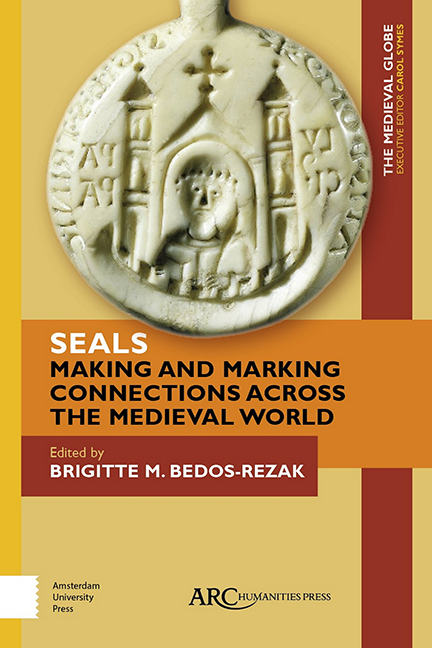Book contents
- Frontmatter
- Contents
- List of Illustrations
- Acknowledgements
- Cultural Transactions: An Introduction to Medieval Seals from a Global Perspective
- Seals as Conceptual and Ritual Tools in Chinese Buddhism, ca. 600– 1000 CE
- Imprinting Powers: The Astrological Seal and Its Doctrinal Meanings in the Latin West
- A Medieval Solution to an Early Modern Problem? The Royal Animal Seals of Jambi
- Expressing New Rule: Seals from Early Islamic Egypt and Syria, 600– 800 CE
- The Formulation of Urban Identity on Byzantine Seals
- The Cloth Seal: A Mark of Quality, Identification, or Taxation?
- Archaeology and Sigillography in Northern Europe
- Medieval Treaties and the Diplomatic Aesthetic
- Index
Seals as Conceptual and Ritual Tools in Chinese Buddhism, ca. 600– 1000 CE
Published online by Cambridge University Press: 20 November 2020
- Frontmatter
- Contents
- List of Illustrations
- Acknowledgements
- Cultural Transactions: An Introduction to Medieval Seals from a Global Perspective
- Seals as Conceptual and Ritual Tools in Chinese Buddhism, ca. 600– 1000 CE
- Imprinting Powers: The Astrological Seal and Its Doctrinal Meanings in the Latin West
- A Medieval Solution to an Early Modern Problem? The Royal Animal Seals of Jambi
- Expressing New Rule: Seals from Early Islamic Egypt and Syria, 600– 800 CE
- The Formulation of Urban Identity on Byzantine Seals
- The Cloth Seal: A Mark of Quality, Identification, or Taxation?
- Archaeology and Sigillography in Northern Europe
- Medieval Treaties and the Diplomatic Aesthetic
- Index
Summary
AS ELSEWHERE IN the premodern world, seals— and, even more importantly, conceptions of seals, and of the human behaviours that featured them— were central to the practice of religion in premodern China. They are perhaps most famous in what are called the “Esoteric,” or Tantric, forms of Buddhism in China, which, as in India, feature hand gestures and bodily postures known as mudrās— literally “seal” in Sanskrit— a word that in Chinese is straightforwardly translated by the main word for seal (and stamp) in that language: yin 印. Beyond ritual postures, and again following Indic conventions, seals in the Esoteric traditions also provided central metaphors for a range of practices and ideas in the Esoteric traditions. The most startling of these is described by David Gray in a recent study of mudrā as a term of art in Indian Buddhist literature whereby, drawn in part from the heterosexual male imagination of seal-like sexual union, mudrā “designates a female deity, and later, by extension, a human female.” Although in Chinese versions of the Esoteric traditions this particular conception was less emphasized, as we will see the intimacy of physical contact and, in particular, the physical transmission of likeness intrinsic to practices of sealing were adapted to a great variety of uses not only in Buddhism but in Daoism as well. Seals indeed— in part due to the infusion of Indic conceptions and practices— possessed a nearly unmatched richness of polysemy in Chinese religious discourse and practice. But they did more than provide metaphors for practice: actual seals (and stamps) also had their places in the hand of Chinese religious specialists of a range of traditions and styles. Echoing both older Chinese and Indic techniques alike, seals in the period treated here (ca. 600– 1000 CE, an age sometimes called “late medieval”) were key tools of ritualists, employed either as adjuncts to spells or as the delivery mechanisms of inscribed spells or talismanic texts and images. These metaphors and physical practices, and the interplay between them, are the subject of this brief survey.
- Type
- Chapter
- Information
- Publisher: Amsterdam University PressPrint publication year: 2019



